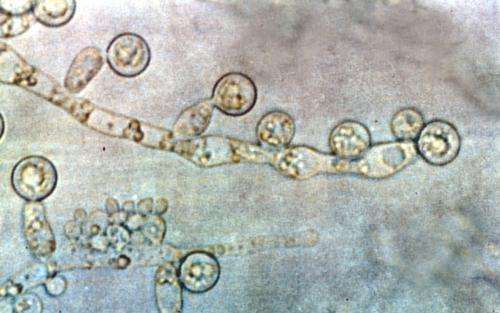Understanding How Candida albicans Colonizes the Human Gut

New research uncovers the mechanisms behind Candida albicans' ability to colonize the human gut, highlighting potential targets to prevent fungal overgrowth and associated health risks.
Approximately 80% of individuals harbor the fungus Candida albicans within their gastrointestinal tract. While in most cases it remains a benign inhabitant without causing noticeable issues, under certain conditions it can transform into a pathogenic microbe, leading to severe infections in organs such as the urinary tract, lungs, and brain. Gaining insight into the mechanisms by which C. albicans establishes itself in the gut is essential for developing strategies to prevent its harmful overgrowth.
Recent research utilizing mouse models has shed light on this process. Scientists at Baylor College of Medicine, along with international partners, discovered unexpected factors that facilitate the colonization and persistence of C. albicans in the gut environment. Notably, their studies, published in Microbiology Spectrum, revealed that even in healthy conditions without prior antibiotic treatment or immune suppression, a clinical strain of C. albicans (called CLCA10) can survive in the mouse gut for at least 58 days. Importantly, this persistent colonization does not lead to weight loss, inflammation, or disruptions in the gut’s bacterial community.
The research countered previous assumptions that factors like immune suppression or disruption of the microbiota were necessary for colonization. Instead, C. albicans was primarily associated with the gut’s contents and mucus layer, making it distinct from other fungi that typically do not colonize the human gut. The study further identified that hyphal factors—specifically certain proteins such as candidalysin, Als3, and Hwp1—are crucial for the fungus to establish and maintain its presence. Strains lacking these proteins showed significantly reduced colonization ability.
Interestingly, the production of the toxin candidalysin, which is known to damage host tissues and trigger immune responses, was found to be essential for colonization, contrary to initial expectations. This highlights the complex role of fungal virulence factors in colonization and persistence.
The findings suggest that targeting these hyphal-associated proteins could be a promising approach to reduce C. albicans colonization in the gut. Such strategies may help prevent invasive infections and address the broader health risks associated with fungal overgrowth. Overall, this research enhances our understanding of host-microbe interactions and the specific attributes that enable C. albicans to become a persistent member of the gut microbiota.
Source: https://medicalxpress.com/news/2025-07-common-fungus-candida-albicans-colonizes.html
Stay Updated with Mia's Feed
Get the latest health & wellness insights delivered straight to your inbox.
Related Articles
How 'Weird Shading' Illusions Help Explain 3D Perception in the Brain
New research reveals that the brain interprets shading through line patterns, rather than complex physics, explaining how we perceive 3D shapes from simple images and artistic techniques.
Innovative Research Offers New Hope for Respiratory Recovery After Spinal Cord Injuries
Innovative research uncovers the critical role of spinal interneurons in enhancing breathing, opening new avenues for therapies for spinal cord injury patients struggling with respiration.
Global Effort Urged for AIDS, TB, and Malaria: A Call to Action for All Nations
International researchers call for all nations to increase support and coordination to combat AIDS, tuberculosis, and malaria, emphasizing the importance of global solidarity and sustainable funding.
The Impact of Iron Levels on Brain Degeneration in Down Syndrome-Related Alzheimer's Disease
Emerging research reveals that increased brain iron levels may accelerate cellular damage and Alzheimer's development in individuals with Down syndrome, highlighting new therapeutic possibilities.



